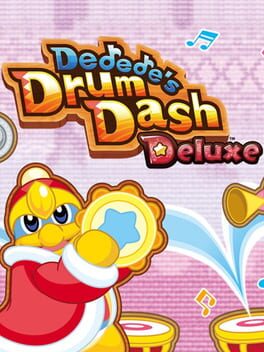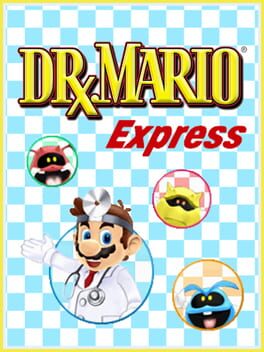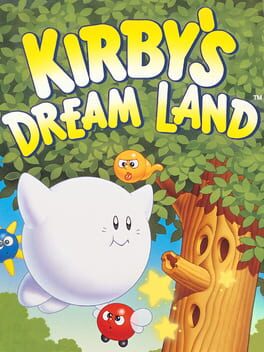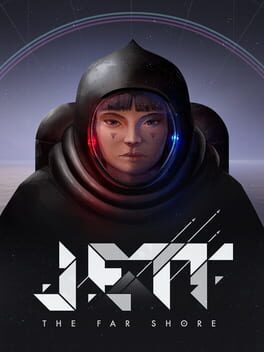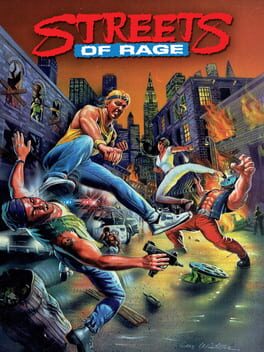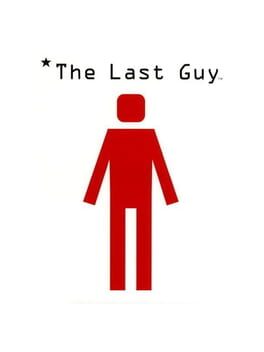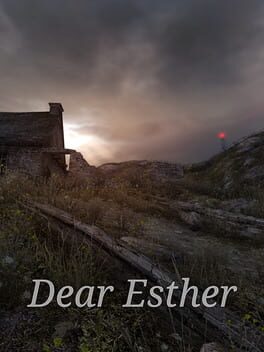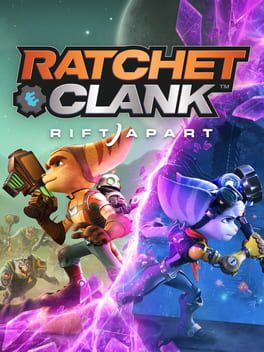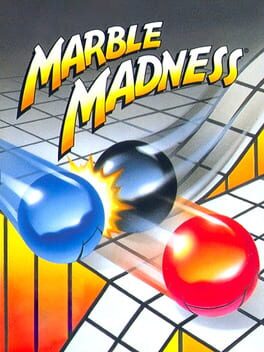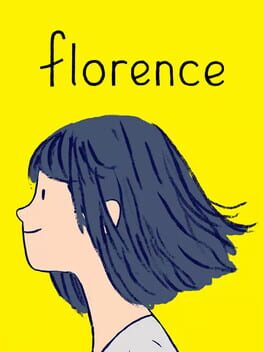2022
2001
2008
1992
This game is very conflicting to me. I absolutely appreciate the fact that it started an iconic franchise and the career of Sakurai, but frankly this game serves only as a spring board for more compelling and interesting games.
As I've played more and more games in the Kirby franchise, I've become more in tune to exactly why it is that I feel that they are so poorly designed and naturally, most of that starts here. Lack of momentum and traversal options make the movement sluggish, drab and repetitive. This is especially heightened by the poor level design, which remains unmemorable and unengaging for the entire short play time of the game. The platform and enemy placement simply do not entice the player to interact with them in any meaningful way, leaving no incentive to experiment, explore or chase technical mastery.
Dream Land a very technically impressive game though, without a doubt. The expressive spritework for Kirby and Dedede especially are the highlights, combined with surprisingly detailed backgrounds and lots of fun little sparks and stars scattering the levels. Unfortunately though, being an impressive Game Boy game doesn't hold enough water to a modern eye to be worth much in terms of scoring or enjoyment.
At 5 levels, it took me 32 minutes to complete this game. Short length isn't really one of my detractors from Dream Land, however, as my disconnect and disinterest with what the game was doing ended up making it feel as if the game was dragging.
As I've played more and more games in the Kirby franchise, I've become more in tune to exactly why it is that I feel that they are so poorly designed and naturally, most of that starts here. Lack of momentum and traversal options make the movement sluggish, drab and repetitive. This is especially heightened by the poor level design, which remains unmemorable and unengaging for the entire short play time of the game. The platform and enemy placement simply do not entice the player to interact with them in any meaningful way, leaving no incentive to experiment, explore or chase technical mastery.
Dream Land a very technically impressive game though, without a doubt. The expressive spritework for Kirby and Dedede especially are the highlights, combined with surprisingly detailed backgrounds and lots of fun little sparks and stars scattering the levels. Unfortunately though, being an impressive Game Boy game doesn't hold enough water to a modern eye to be worth much in terms of scoring or enjoyment.
At 5 levels, it took me 32 minutes to complete this game. Short length isn't really one of my detractors from Dream Land, however, as my disconnect and disinterest with what the game was doing ended up making it feel as if the game was dragging.
2021
JETT: The Far Shore is… confounding. For a game that is marketed as being about speed and graceful maneuvering, the controls feel very clunky and you aren’t going as fast as you’d like to most of the time. A great concept and score just can’t stop it from feeling like JETT: The Hard Bore. I can’t recommend it.
1991
I really have no experience with the beat em' up genre, and as I'm trying to expand my gaming horizons and test out franchises and game styles I haven't gotten into before, Streets of Rage felt like a good starting place for what in my eyes seems to be a pretty basic and samey genre.
I played this through the Sega Genesis Classics collection, which offers rewind, speed-up and local/online co-op, and it's more than likely the absolute perfect way to experience this game. Everything about Streets of Rage holds up exceedingly well, it just feels really basic from what your characters can do- just a couple grabs, a jump kick and a punch combo.
Streets of Rage really has a ton of personality in its visuals, music and characters. It has a cliche premise of walking the dirty streets clobbering waves of thugs, but the over the top, ridiculously radical intro and detailed backgrounds make it just a totally tubular audio/visual experience.
There's probably a hidden layer of depth that I don't know about considering I haven't played the game longer than a single playthrough, but as it stands Streets of Rage is brief, rad and satisfying, but just a little bit basic for my taste.
Very interested to see how the series grows in 2 and 3 which are also in this collection!
I played this through the Sega Genesis Classics collection, which offers rewind, speed-up and local/online co-op, and it's more than likely the absolute perfect way to experience this game. Everything about Streets of Rage holds up exceedingly well, it just feels really basic from what your characters can do- just a couple grabs, a jump kick and a punch combo.
Streets of Rage really has a ton of personality in its visuals, music and characters. It has a cliche premise of walking the dirty streets clobbering waves of thugs, but the over the top, ridiculously radical intro and detailed backgrounds make it just a totally tubular audio/visual experience.
There's probably a hidden layer of depth that I don't know about considering I haven't played the game longer than a single playthrough, but as it stands Streets of Rage is brief, rad and satisfying, but just a little bit basic for my taste.
Very interested to see how the series grows in 2 and 3 which are also in this collection!
I'm not great at Tetris, even though I've played a solid amount of the original on an NES cart and a few hours of Tetris 99 and Puyo Puyo Tetris. This game made me genuinely zoned in to the point where I felt really compelled to get better at the mechanics of clearing lines of goddamn blocks.
The levels with lyrics (the first two and the last one especially) are by far my favorite, and honestly they make some of the other levels feel a bit empty in comparison. I love the visual variety of all the different stages and the sound design gives them each a super unique flair. My only downside to Tetris Effect is that those less interesting levels don't hit the same highs as the ones that really do, making it feel inconsistent at times. The gameplay doesn't change, obviously, but when you come off a level that engages you on an audio/visual level and hop into one that just feels a bit bland and barren, it's kinda jarring. There's also a ton of content in this game which I respect even though I've only played through the short Journey mode.
The idea of basing this around the "Tetris Effect" where people get Tetris blocks stuck in their brain even after playing is amazing, and it taps into a specific puzzle game part of my psyche to the point that I'm still experiencing that Tetris effect almost 3 days after playing it. I really only got that feeling before with Picross, and its very nice to have a puzzle game that has insane AAA production value.
How the heck are they going to move forward in the Tetris franchise after this one?
The levels with lyrics (the first two and the last one especially) are by far my favorite, and honestly they make some of the other levels feel a bit empty in comparison. I love the visual variety of all the different stages and the sound design gives them each a super unique flair. My only downside to Tetris Effect is that those less interesting levels don't hit the same highs as the ones that really do, making it feel inconsistent at times. The gameplay doesn't change, obviously, but when you come off a level that engages you on an audio/visual level and hop into one that just feels a bit bland and barren, it's kinda jarring. There's also a ton of content in this game which I respect even though I've only played through the short Journey mode.
The idea of basing this around the "Tetris Effect" where people get Tetris blocks stuck in their brain even after playing is amazing, and it taps into a specific puzzle game part of my psyche to the point that I'm still experiencing that Tetris effect almost 3 days after playing it. I really only got that feeling before with Picross, and its very nice to have a puzzle game that has insane AAA production value.
How the heck are they going to move forward in the Tetris franchise after this one?
2008
The gameplay loop for The Last Guy is really satisfying and arcade-y, I really just wish it was more visually distinct and controlled better.
The concept of using pictures of real world locations as the maps you travel on is novel, but it leads to a lot of visual clutter and terrible level collision that makes it very tough to get exactly where you want to in a level. Outside of that the menus are presented in this 90's hackerman computer style that's not super pleasing.
I give this game a passing score because I recognize the conceptual value and like the core gameplay quite a lot, but this game really doesn't hold up with its visuals and controls being so janky. At least I didn't pay for it individually though, since it's on PS Now.
I do like it when the weird voice goes "THE LAST GUY", though.
The concept of using pictures of real world locations as the maps you travel on is novel, but it leads to a lot of visual clutter and terrible level collision that makes it very tough to get exactly where you want to in a level. Outside of that the menus are presented in this 90's hackerman computer style that's not super pleasing.
I give this game a passing score because I recognize the conceptual value and like the core gameplay quite a lot, but this game really doesn't hold up with its visuals and controls being so janky. At least I didn't pay for it individually though, since it's on PS Now.
I do like it when the weird voice goes "THE LAST GUY", though.
2012
I'd consider myself a pretty big walking sim fan, but I feel like Dear Esther is the game that really points out why so many people are turned off by the genre. Its overly simplistic in its interactibility and controls, while simultaneously being super convoluted with its storytelling.
It's briefness and simplicity are of course the draw and entirely by design, pushing the medium of gaming to its barest requirements, and while I think the game is interesting on a meta level because of that, in execution I find it to be solidly underwhelming. I wish there were some more secrets to find in the really well rendered environments, because every time I went off the beaten path I just found nothing but a dead end.
The story is also too cryptically told for its own good, delivering a simple narrative through over-written prose. There isn't a particularly satisfying ending or engaging twist to it all either, meaning I really just felt empty as I finished it up.
Gone Home, What Remains of Edith Finch, Firewatch, and (while I hate to say it) The Vanishing of Ethan Carter all offer much more to grab onto in terms of game design and storytelling, and Dear Esther just feels empty in comparison.
It's briefness and simplicity are of course the draw and entirely by design, pushing the medium of gaming to its barest requirements, and while I think the game is interesting on a meta level because of that, in execution I find it to be solidly underwhelming. I wish there were some more secrets to find in the really well rendered environments, because every time I went off the beaten path I just found nothing but a dead end.
The story is also too cryptically told for its own good, delivering a simple narrative through over-written prose. There isn't a particularly satisfying ending or engaging twist to it all either, meaning I really just felt empty as I finished it up.
Gone Home, What Remains of Edith Finch, Firewatch, and (while I hate to say it) The Vanishing of Ethan Carter all offer much more to grab onto in terms of game design and storytelling, and Dear Esther just feels empty in comparison.
2019
I had heard of A Short Hike in passing when it released late last year on Steam. Fans and critics alike praised it highly for its wonderful pacing, unique visual style, and for not overstaying its welcome. It took me until I saw the announcement trailer during Nintendo's latest Indie World presentation to finally give the game a try; and good gravy did I have a good time when I did. It ended up piquing my interest because of my passion for short, well-designed indie games, and honestly now that I’ve played it, I can’t believe I didn’t bite sooner.
A Short Hike is a small-scale adventure game developed and published by Adamgryu, with a deliciously wonderful soundtrack composed by Mark Sparling. The game stars an anthropomorphic bird named Claire, a young girl who is on a vacation with her aunt in an island park. The premise is simple- get Claire to the top of the island’s mountain, called Hawk’s Peak, and have a relaxing time as you explore and scramble your way up. A Short Hike stays true to its name too, clocking in at just over two hours in my first playthrough, which is including most of the side content.
While the simplistic concept and truncated play-time might lead some to think that A Short Hike is devoid of content, that couldn’t be further from the truth. The island surrounding Hawk’s Peak is expertly crafted. There are dozens of characters to meet, collectibles and money to stuff your pockets with, and many secrets to uncover along the way. It’s this feeling of tight design where the game truly shines. The island is just big enough that it feels like there’s room to find your own path, but dense enough that no space feels wasted.
Exploring this well-crafted, bite-sized world is a treat within itself, simply because of Claire’s ability to jump, glide and climb - Breath of the Wild style - around the environment. These actions are all governed by the golden feathers, a set of collectibles you can find around the island that essentially act as a stamina meter. This allows you to wander through the environment at your own pace as you roam and discover more feathers, seamlessly meshing the side content and exploration with the main objective. This is all heightened by how gorgeous the game looks, with slightly-pixelated rendered beautiful landscapes that are painted with a color palette that’s a treat for the eyes. These varied locales are accompanied by Mark Sparling’s soundtrack, which is easily one of my favorite game soundtracks in recent memory. The songs fade in and out organically as you traverse from place to place, making each area feel even more distinct and memorable.
The script for the locals scattered across the island is absolutely exquisite, managing to make me genuinely laugh quite a few times; lending an air of charm and wit to everyone you encounter. On top of being fun, these critters are also useful to interact with. They can offer you tips and advice about the world, give you helpful items, start mini-games, or task you with side quests that spur you to explore the island even further. As the bow on top of an already overwhelmingly charming package, A Short Hike offers a heart-warming story that brought a tear to my eye as I wrapped up the few hours I spent with the game.
The one complaint I do have, however, is the inventory system. Each one of the dozen-plus items you can accrue through your journey is placed in a single file line in the inventory, making it cumbersome to search through and select a specific tool that you need. This is a blemish that only rears its head in certain situations, though it bothered me often enough to compel me to mention.
Honestly, I cannot recommend A Short Hike enough. It’s a breath of fresh air in a game industry that’s oversaturated with 40-hour, open-world epics and battle royales. It surpassed my expectations in every way, nailing nearly every aspect of its execution in a way that makes me fall in love with indie games all over again. Some may complain that it ends too soon, but I was personally fulfilled with the game exactly how it is.
A Short Hike is a small-scale adventure game developed and published by Adamgryu, with a deliciously wonderful soundtrack composed by Mark Sparling. The game stars an anthropomorphic bird named Claire, a young girl who is on a vacation with her aunt in an island park. The premise is simple- get Claire to the top of the island’s mountain, called Hawk’s Peak, and have a relaxing time as you explore and scramble your way up. A Short Hike stays true to its name too, clocking in at just over two hours in my first playthrough, which is including most of the side content.
While the simplistic concept and truncated play-time might lead some to think that A Short Hike is devoid of content, that couldn’t be further from the truth. The island surrounding Hawk’s Peak is expertly crafted. There are dozens of characters to meet, collectibles and money to stuff your pockets with, and many secrets to uncover along the way. It’s this feeling of tight design where the game truly shines. The island is just big enough that it feels like there’s room to find your own path, but dense enough that no space feels wasted.
Exploring this well-crafted, bite-sized world is a treat within itself, simply because of Claire’s ability to jump, glide and climb - Breath of the Wild style - around the environment. These actions are all governed by the golden feathers, a set of collectibles you can find around the island that essentially act as a stamina meter. This allows you to wander through the environment at your own pace as you roam and discover more feathers, seamlessly meshing the side content and exploration with the main objective. This is all heightened by how gorgeous the game looks, with slightly-pixelated rendered beautiful landscapes that are painted with a color palette that’s a treat for the eyes. These varied locales are accompanied by Mark Sparling’s soundtrack, which is easily one of my favorite game soundtracks in recent memory. The songs fade in and out organically as you traverse from place to place, making each area feel even more distinct and memorable.
The script for the locals scattered across the island is absolutely exquisite, managing to make me genuinely laugh quite a few times; lending an air of charm and wit to everyone you encounter. On top of being fun, these critters are also useful to interact with. They can offer you tips and advice about the world, give you helpful items, start mini-games, or task you with side quests that spur you to explore the island even further. As the bow on top of an already overwhelmingly charming package, A Short Hike offers a heart-warming story that brought a tear to my eye as I wrapped up the few hours I spent with the game.
The one complaint I do have, however, is the inventory system. Each one of the dozen-plus items you can accrue through your journey is placed in a single file line in the inventory, making it cumbersome to search through and select a specific tool that you need. This is a blemish that only rears its head in certain situations, though it bothered me often enough to compel me to mention.
Honestly, I cannot recommend A Short Hike enough. It’s a breath of fresh air in a game industry that’s oversaturated with 40-hour, open-world epics and battle royales. It surpassed my expectations in every way, nailing nearly every aspect of its execution in a way that makes me fall in love with indie games all over again. Some may complain that it ends too soon, but I was personally fulfilled with the game exactly how it is.
Coming directly off my one day BINGE of Ratchet & Clank (2016), and hearing some mixed things from a few sources (namely Videogamedunkey and Abram Buehner), I honestly expected Ratchet & Clank: Rift Apart to be an underwhelming sequel not worthy of the PS5 exclusivity hype. The truth of the matter though, is that this is genuinely one of the highest production value and all around complete and satisfying video game experiences I’ve ever had, and I couldn’t be happier about it.
Rift Apart hits the highest marks on essentially any metric you can throw at it. It’s inarguably one of the highest fidelity games the industry has ever seen, with immaculate character detail and texturework and genuinely breathtaking lighting effects that somehow look even better in action. This is supported by amazing animation for… well everything, including fluid character movement, off-the-charts particle effects, HUGE scale set piece moments and IMMENSELY impactful weaponry shots- all of which run at a blindingly smooth 60 FPS in performance ray-tracing mode. While the titular rift mechanics of the game may not alter the core gameplay all that much, the visual variety and creativity that went into creating the technical marvel of instantly zapping between locations is engaging and clearly utilizes the PS5’s SSD a lot.
The best way I can describe the core combat gameplay is tactile. The previously mentioned weapon animation is combined with DualSense rumble and sound design to give you a lineup of weapons that all feel amazing to utilize, especially once they’re upgraded and you’re fighting in more complex battles. It’s difficult to understate what a perfect gameplay loop the folks at Insomniac have created with the combat, upgrades and exploration all feeding into one another. There’s always a sense that you’re being rewarded for experimenting with your arsenal, which not only allows you to upgrade your weapons even further and become better at the gameplay, but have more fun with each combat encounter as you learn which weapons synergize in satisfying ways. When you have a battle with dozens upon dozens of enemies with particle effects and explosions happening everywhere but feel completely in control of how you’re tackling the scenario, that’s really videogame magic.
This game is also leaps and bounds more creative and charming than the 2016 reboot. The characters and worlds, even when gimmicky, exude personality and move the series forward in really fun ways. All four of our main protagonists, including the titular Ratchet and Clank and their alternate universe counterparts Rivet and Kit, deal with genuinely interesting personal issues, which gives the over-the-top, campy story a much more grounded and emotional impact. Rivet finds herself locked a loop of being a hero that can never win, leading her to believe that she doesn’t have it within her to make friends and rise triumphant. Her softer personal side is hidden behind a facade of swashbuckling suave, and watching her come to terms with trust and friendship was emotionally riveting, pun ENTIRELY intended. Kit on the other hand sees herself as dangerous and untrustworthy, as she unintentionally hurt others in the past. I loved watching her slowly open up with the ever-hopeful Ratchet literally at her back, and her character arc intersects with Rivet’s in a powerful way. I definitely enjoyed being introduced to Rivet and Kit, and I can’t imagine the series moving forward without them.
Emperor Nefarious is also LEAGUES more intimidating and exacting than his PhD counterpart, making the stakes feel higher and the pressure greater for you to actually save the world. Outside of the obvious core characters though, this game excels intensely well in creating sidequests with memorable one-off characters, and having a ridiculously fun supporting cast. I think back to Tulio’s ridiculous honey/suffering tower defense, having a heart-to-heart with the Fixer, and discovering the abandoned dimension of Junk Bot and Juice. The Morts have some really funny dialogue, Ms. Zurkon and Zurkon Jr. drip charm with every line, and Phantom, Quantum and Pierre offer much more interesting personalities and backgrounds than their main-universe counterparts.
Does it feel like a game that couldn’t run compromised on a PS4 or that utilizes every unique aspect of the PS5’s capabilities? No, but I don’t necessarily think that’s a fair metric to score a game on. Rift Apart would be a solidly different experience if it were on PS4 though, as the rift tethers and non-existent load times would push the hardware past its limits and make that console roar even louder than it already does. Very few games ever reach the harmony between hardware gimmick utilization and ideal gameplay, especially not ones released less than a year into a console’s lifecycle. For an early PS5 game and one of the first true exclusives on the platform though, this game does everything it needs to. The gorgeous visuals and blisteringly speedy load times are at the peak of games being released at the moment, and the high polish of the experience overall makes this a stand-out, must play for PS5 owners (not that there’s much competition).
Unfortunately, Rift Apart still has a few holes in terms of glitches and bugs. I had my fair share of interactions with janky geometry, especially when rocketing around with the rocket boots, clipped through platforms a handful of times, saw the occasional failed animation, and even got stuck in a pocket dimension one time and had to reload an older save. It’s a testament to the overall performance of the game and its load times then, that these moments hardly marred my experience in the slightest. With a few patches, this game may end up being technically flawless.
Most importantly though, this is a game I can easily recommend to players of any skill level. The relative simplicity of the Ratchet gameplay formula easily works as baby’s first action platformer, while Ratchet veterans will enjoy blasting through hordes of enemies, scouring the environments for secrets and soaking in the gorgeous visuals and audio. This is all boosted even further by the game’s in-depth accessibility options, that allow players of any ability to tailor the experience to fit their needs.
Ratchet & Clank: Rift Apart is a fantastic game. It boasts top of the line visuals, gratifying combat, engaging exploration, wonderful characters and awesome accessibility options. The team at Insomniac should be proud of what they made, a game that sets the bar ludicrously high with its quality in every possible category. Does it reinvent the wheel? No, but there’s something to be said for taking the wheel and polishing it until it gleams.
Rift Apart hits the highest marks on essentially any metric you can throw at it. It’s inarguably one of the highest fidelity games the industry has ever seen, with immaculate character detail and texturework and genuinely breathtaking lighting effects that somehow look even better in action. This is supported by amazing animation for… well everything, including fluid character movement, off-the-charts particle effects, HUGE scale set piece moments and IMMENSELY impactful weaponry shots- all of which run at a blindingly smooth 60 FPS in performance ray-tracing mode. While the titular rift mechanics of the game may not alter the core gameplay all that much, the visual variety and creativity that went into creating the technical marvel of instantly zapping between locations is engaging and clearly utilizes the PS5’s SSD a lot.
The best way I can describe the core combat gameplay is tactile. The previously mentioned weapon animation is combined with DualSense rumble and sound design to give you a lineup of weapons that all feel amazing to utilize, especially once they’re upgraded and you’re fighting in more complex battles. It’s difficult to understate what a perfect gameplay loop the folks at Insomniac have created with the combat, upgrades and exploration all feeding into one another. There’s always a sense that you’re being rewarded for experimenting with your arsenal, which not only allows you to upgrade your weapons even further and become better at the gameplay, but have more fun with each combat encounter as you learn which weapons synergize in satisfying ways. When you have a battle with dozens upon dozens of enemies with particle effects and explosions happening everywhere but feel completely in control of how you’re tackling the scenario, that’s really videogame magic.
This game is also leaps and bounds more creative and charming than the 2016 reboot. The characters and worlds, even when gimmicky, exude personality and move the series forward in really fun ways. All four of our main protagonists, including the titular Ratchet and Clank and their alternate universe counterparts Rivet and Kit, deal with genuinely interesting personal issues, which gives the over-the-top, campy story a much more grounded and emotional impact. Rivet finds herself locked a loop of being a hero that can never win, leading her to believe that she doesn’t have it within her to make friends and rise triumphant. Her softer personal side is hidden behind a facade of swashbuckling suave, and watching her come to terms with trust and friendship was emotionally riveting, pun ENTIRELY intended. Kit on the other hand sees herself as dangerous and untrustworthy, as she unintentionally hurt others in the past. I loved watching her slowly open up with the ever-hopeful Ratchet literally at her back, and her character arc intersects with Rivet’s in a powerful way. I definitely enjoyed being introduced to Rivet and Kit, and I can’t imagine the series moving forward without them.
Emperor Nefarious is also LEAGUES more intimidating and exacting than his PhD counterpart, making the stakes feel higher and the pressure greater for you to actually save the world. Outside of the obvious core characters though, this game excels intensely well in creating sidequests with memorable one-off characters, and having a ridiculously fun supporting cast. I think back to Tulio’s ridiculous honey/suffering tower defense, having a heart-to-heart with the Fixer, and discovering the abandoned dimension of Junk Bot and Juice. The Morts have some really funny dialogue, Ms. Zurkon and Zurkon Jr. drip charm with every line, and Phantom, Quantum and Pierre offer much more interesting personalities and backgrounds than their main-universe counterparts.
Does it feel like a game that couldn’t run compromised on a PS4 or that utilizes every unique aspect of the PS5’s capabilities? No, but I don’t necessarily think that’s a fair metric to score a game on. Rift Apart would be a solidly different experience if it were on PS4 though, as the rift tethers and non-existent load times would push the hardware past its limits and make that console roar even louder than it already does. Very few games ever reach the harmony between hardware gimmick utilization and ideal gameplay, especially not ones released less than a year into a console’s lifecycle. For an early PS5 game and one of the first true exclusives on the platform though, this game does everything it needs to. The gorgeous visuals and blisteringly speedy load times are at the peak of games being released at the moment, and the high polish of the experience overall makes this a stand-out, must play for PS5 owners (not that there’s much competition).
Unfortunately, Rift Apart still has a few holes in terms of glitches and bugs. I had my fair share of interactions with janky geometry, especially when rocketing around with the rocket boots, clipped through platforms a handful of times, saw the occasional failed animation, and even got stuck in a pocket dimension one time and had to reload an older save. It’s a testament to the overall performance of the game and its load times then, that these moments hardly marred my experience in the slightest. With a few patches, this game may end up being technically flawless.
Most importantly though, this is a game I can easily recommend to players of any skill level. The relative simplicity of the Ratchet gameplay formula easily works as baby’s first action platformer, while Ratchet veterans will enjoy blasting through hordes of enemies, scouring the environments for secrets and soaking in the gorgeous visuals and audio. This is all boosted even further by the game’s in-depth accessibility options, that allow players of any ability to tailor the experience to fit their needs.
Ratchet & Clank: Rift Apart is a fantastic game. It boasts top of the line visuals, gratifying combat, engaging exploration, wonderful characters and awesome accessibility options. The team at Insomniac should be proud of what they made, a game that sets the bar ludicrously high with its quality in every possible category. Does it reinvent the wheel? No, but there’s something to be said for taking the wheel and polishing it until it gleams.
1984
2018
Florence isn't like anything you've ever played before. It's a solely emotional experience about living life through someone else's eyes and trying to feel what they feel through all sorts of moments. I'm not gonna sugar coat it, this is a game about a breakup.
I first played this game about three years ago, before I had even had a single relationship, and at the time it was still incredibly emotionally resonant to me. Since then I've had a few relationships, but I recently went through a really tough breakup and honestly... now I really get the game. There's so much emotional texture in detail in this incredibly simple game that allows you to connect to its world, with fantastic use of a satisfying color palette and probably one of the greatest game soundtracks I've ever heard pulling it all together.
It's only a handful of dollars on the appstore or Nintendo Switch, and takes less than an hour to complete, and I can't recommend it enough. Especially if you're going through something rough in your personal life, give this a try. In the end it's about discovering your true self and moving on from past pain, things that I think can have a positive impact on everyone who plays it.
I first played this game about three years ago, before I had even had a single relationship, and at the time it was still incredibly emotionally resonant to me. Since then I've had a few relationships, but I recently went through a really tough breakup and honestly... now I really get the game. There's so much emotional texture in detail in this incredibly simple game that allows you to connect to its world, with fantastic use of a satisfying color palette and probably one of the greatest game soundtracks I've ever heard pulling it all together.
It's only a handful of dollars on the appstore or Nintendo Switch, and takes less than an hour to complete, and I can't recommend it enough. Especially if you're going through something rough in your personal life, give this a try. In the end it's about discovering your true self and moving on from past pain, things that I think can have a positive impact on everyone who plays it.
2015
Oh, Bloodborne. I'm classically not a guy who's a fan of challenge in video games. Take that how you will, and feel completely free to call me a pussy or a baby if you so choose, but I've always preferred to feel powerful and have a constant stream of progression in games rather than hitting my head against a boss for multiple hours. Bloodborne in some ways, both changed and supported this for me. I say this because obviously, being a From Software game, Bloodborne is certainly a more challenging experience than any other of my favorite games of all time, but with the way that I personally played it, I honestly didn't find it too particularly hard.
Full disclaimer: I cheesed the HELLLLL out of this game. I followed guides, watched videos, grinded my ass off for Blood Echoes so I could be overleveled, etc. Some might say that this invalidates my experience with the game a bunch, as I know most of the draw of Miyazaki’s games is to feel the difficulty of them and git gud, but I find Bloodborne to be a magically well designed game specifically because I was able to pace it to my own enjoyment.
Honestly this game has very little in the way of flaws, so excuse me if I use this review more so to gush about and reflect upon the fond memories that I have for one of my favorite games of all time. I’d actually started Bloodborne multiple times before, and never once even gotten past the brick troll in Central Yarnham. I didn’t understand the importance of using the lock-on or dodge rolling, and kept getting frustrated by the constant loss of my Blood Echoes- so I would just get pissed and quit. I took about a month break and came back to a previously started save, and BOY HOWDY am I glad that I did. It took just a bit of pushing through a tough part in the Cathedral Ward and Old Yarnham, but then I was HOOKED. I played almost 30 hours of this game in under 2 weeks, and every bit of my free time that wasn’t spent playing was on YouTube watching lore videos by Vaati Vidya, Aegon of Astora and Redgrave or researching the ways that other people played the game. I was, and honestly still am, obsessed with the world that Miyazaki and his bois at FromSoft made in this game.
It’s the world of Yarnham that really is the draw for Bloodborne. I’m a huge fan of lore and unique design when it comes to the world of a video game, which is why I’m such a big fan of Control, Bioshock and Xenoblade Chronicles 2. Bloodborne has lore and atmosphere leaking viscously and grotesquely from each and every pore- in the best way possible. It’s kinda tough to piece together the story that’s being told in the game, as everything is told through environmental design and item description snippets with very little in the way of cutscenes and dialogue. While I would probably consider this a downside to any lesser game, the atmosphere that Bloodborne is able to concoct through this both in the game and surrounding it in a more meta name is absolutely intoxicating. It feels like the community are legitimately a group of scholars when discussing the history of Yarnham, applying real life studies and genuine learning concepts to discover what exactly happened with Byrgenwerth, the Great Ones and the Healing Church.
On top of this incredibly deep and engrossing lore, Bloodborne has the visually enthralling and wonderfully detailed physical world to back it up. Each area of the entirely interconnected world is rendered in painstaking detail, with coffins, bones, books and blood strewn about in ridiculously meticulous ways. There’s a wide variety of locales to traverse, with increasingly disturbing content and tone as you progress through the game. Certain areas also have unique gameplay mechanics to spice things up and increase tension, whether that be poisonous lakes, enemies that can do 90% of your health in a second, or having a guy with a gatling gun shooting at you through the entire level. Inside these deliciously realized areas are some of the most creative and grotesque enemy designs in the industry. I can’t stress enough how blown away I was by the variety and uniqueness of each of the enemies in the game, since I’m so used to games having super simple, colorful enemies (Mario, Zelda, Mega Man) or generic goons (Spider-Man, Uncharted, Last of Us). Those games aren’t worse because of their less creative enemy design, but Bloodborne is certainly heightened by the amount of mechanical and visual variety in its foes.
The combat and general mechanics of the game are just as fantastically engrossing as the rest of the aspects that I’ve mentioned. You have a crazy amount of choice in how you want to customize your character, with a laundry list of unique trick weapons at your disposal, blood crystals to power them up, and interchangeable Caryll runes to give you passive benefits. You can pump your stat points into whatever you want, prioritizing certain attributes to match your playstyle to a tee. On top of that there are dozens upon dozens of armor sets, all of which tie into the lore and oh- they look great too. It definitely takes a while to get used to the mechanics of dodging and being incredibly aggressive if you’re not a veteran of the FromSoft game style, but once you push past that initial confusion, you’ll be rewarded with one of the best feeling characters to control in combat in the history of the medium. I found myself understanding the timing of my attacks and dodge-roll invincibility frames so well by the end of my playthrough that I was able to push through many of the later bosses with relative ease (I took down Amygdala and The One Reborn on the first try!).
In the end, Bloodborne is a game I would say is worth a shot for anyone interested in action games. If its difficulty and gameplay don’t hook you, you’ll at least have an appreciation for the world design and atmosphere- but if they DO, you’ll have one of the most engrossing video game worlds to lose yourself in from every angle. I highly recommend checking out VaatiVidya’s few Bloodborne lore videos to start yourself off on the right foot when considering the story, but then jumping into Aegon of Astora’s Let’s Talk Lore series to really dive deep into theories and community engagement. Bloodborne is now one of my favorite games of all time, and - I can’t believe I’m saying this- I absolutely can’t wait to play Dark Souls, Sekiro, and Demon’s Souls. If you’d asked me 3 months ago if I would even consider giving those games a shot I would have laughed at you, but now I’m so fascinated by the FromSoft game design philosophy that I just want to lose myself in more of their worlds.
Bloodborne is a nearly flawless game from every angle.
Full disclaimer: I cheesed the HELLLLL out of this game. I followed guides, watched videos, grinded my ass off for Blood Echoes so I could be overleveled, etc. Some might say that this invalidates my experience with the game a bunch, as I know most of the draw of Miyazaki’s games is to feel the difficulty of them and git gud, but I find Bloodborne to be a magically well designed game specifically because I was able to pace it to my own enjoyment.
Honestly this game has very little in the way of flaws, so excuse me if I use this review more so to gush about and reflect upon the fond memories that I have for one of my favorite games of all time. I’d actually started Bloodborne multiple times before, and never once even gotten past the brick troll in Central Yarnham. I didn’t understand the importance of using the lock-on or dodge rolling, and kept getting frustrated by the constant loss of my Blood Echoes- so I would just get pissed and quit. I took about a month break and came back to a previously started save, and BOY HOWDY am I glad that I did. It took just a bit of pushing through a tough part in the Cathedral Ward and Old Yarnham, but then I was HOOKED. I played almost 30 hours of this game in under 2 weeks, and every bit of my free time that wasn’t spent playing was on YouTube watching lore videos by Vaati Vidya, Aegon of Astora and Redgrave or researching the ways that other people played the game. I was, and honestly still am, obsessed with the world that Miyazaki and his bois at FromSoft made in this game.
It’s the world of Yarnham that really is the draw for Bloodborne. I’m a huge fan of lore and unique design when it comes to the world of a video game, which is why I’m such a big fan of Control, Bioshock and Xenoblade Chronicles 2. Bloodborne has lore and atmosphere leaking viscously and grotesquely from each and every pore- in the best way possible. It’s kinda tough to piece together the story that’s being told in the game, as everything is told through environmental design and item description snippets with very little in the way of cutscenes and dialogue. While I would probably consider this a downside to any lesser game, the atmosphere that Bloodborne is able to concoct through this both in the game and surrounding it in a more meta name is absolutely intoxicating. It feels like the community are legitimately a group of scholars when discussing the history of Yarnham, applying real life studies and genuine learning concepts to discover what exactly happened with Byrgenwerth, the Great Ones and the Healing Church.
On top of this incredibly deep and engrossing lore, Bloodborne has the visually enthralling and wonderfully detailed physical world to back it up. Each area of the entirely interconnected world is rendered in painstaking detail, with coffins, bones, books and blood strewn about in ridiculously meticulous ways. There’s a wide variety of locales to traverse, with increasingly disturbing content and tone as you progress through the game. Certain areas also have unique gameplay mechanics to spice things up and increase tension, whether that be poisonous lakes, enemies that can do 90% of your health in a second, or having a guy with a gatling gun shooting at you through the entire level. Inside these deliciously realized areas are some of the most creative and grotesque enemy designs in the industry. I can’t stress enough how blown away I was by the variety and uniqueness of each of the enemies in the game, since I’m so used to games having super simple, colorful enemies (Mario, Zelda, Mega Man) or generic goons (Spider-Man, Uncharted, Last of Us). Those games aren’t worse because of their less creative enemy design, but Bloodborne is certainly heightened by the amount of mechanical and visual variety in its foes.
The combat and general mechanics of the game are just as fantastically engrossing as the rest of the aspects that I’ve mentioned. You have a crazy amount of choice in how you want to customize your character, with a laundry list of unique trick weapons at your disposal, blood crystals to power them up, and interchangeable Caryll runes to give you passive benefits. You can pump your stat points into whatever you want, prioritizing certain attributes to match your playstyle to a tee. On top of that there are dozens upon dozens of armor sets, all of which tie into the lore and oh- they look great too. It definitely takes a while to get used to the mechanics of dodging and being incredibly aggressive if you’re not a veteran of the FromSoft game style, but once you push past that initial confusion, you’ll be rewarded with one of the best feeling characters to control in combat in the history of the medium. I found myself understanding the timing of my attacks and dodge-roll invincibility frames so well by the end of my playthrough that I was able to push through many of the later bosses with relative ease (I took down Amygdala and The One Reborn on the first try!).
In the end, Bloodborne is a game I would say is worth a shot for anyone interested in action games. If its difficulty and gameplay don’t hook you, you’ll at least have an appreciation for the world design and atmosphere- but if they DO, you’ll have one of the most engrossing video game worlds to lose yourself in from every angle. I highly recommend checking out VaatiVidya’s few Bloodborne lore videos to start yourself off on the right foot when considering the story, but then jumping into Aegon of Astora’s Let’s Talk Lore series to really dive deep into theories and community engagement. Bloodborne is now one of my favorite games of all time, and - I can’t believe I’m saying this- I absolutely can’t wait to play Dark Souls, Sekiro, and Demon’s Souls. If you’d asked me 3 months ago if I would even consider giving those games a shot I would have laughed at you, but now I’m so fascinated by the FromSoft game design philosophy that I just want to lose myself in more of their worlds.
Bloodborne is a nearly flawless game from every angle.
